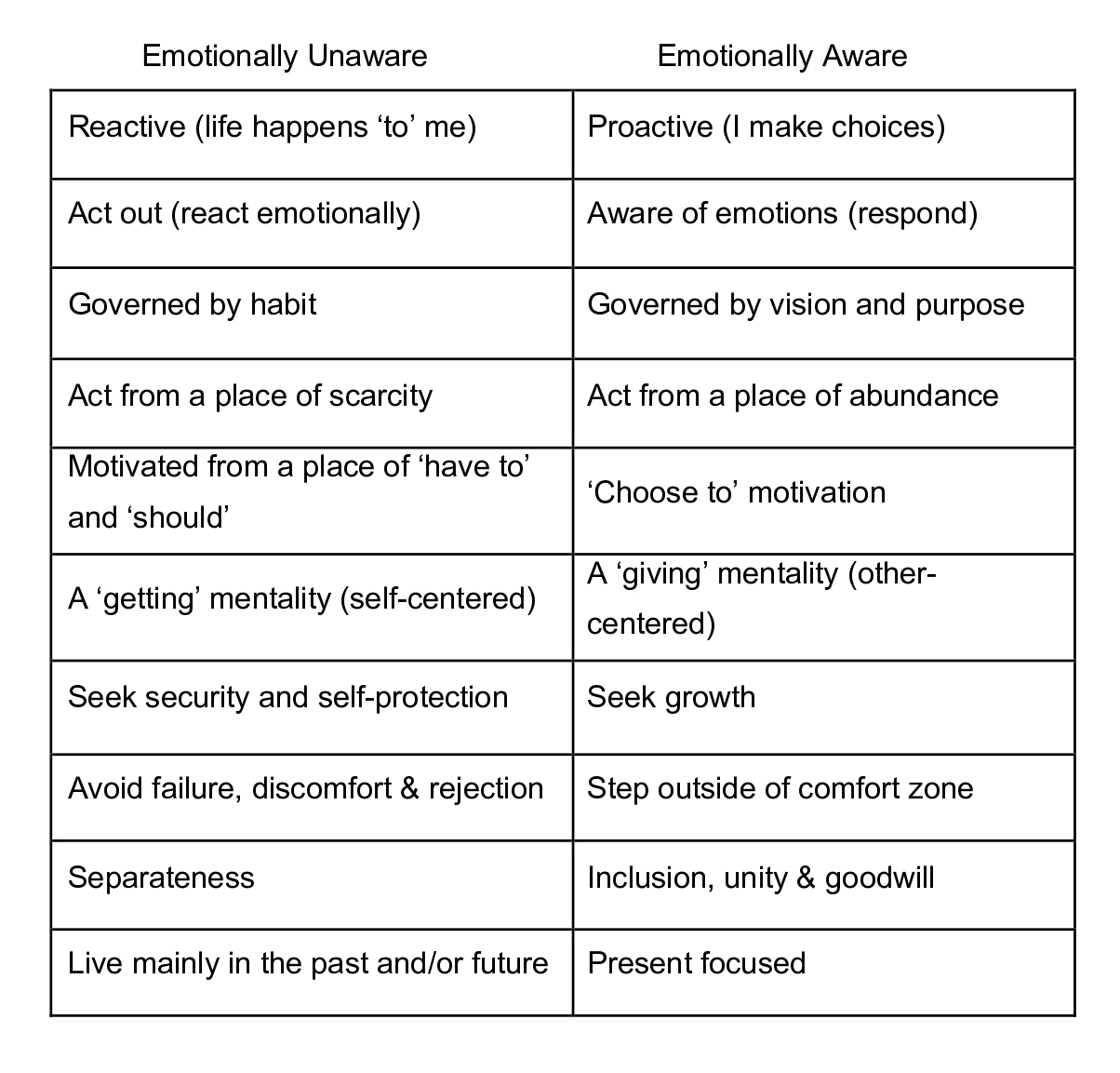 Image by spider0702 from Pixabay
Image by spider0702 from Pixabay
Approx. 4 minute read
Welcome to Part Seven in the series of Practical Tools for Improving Your Mental and Emotional Well-Being.
Get ready to expand your Emotional Awareness.
Emotional Awareness
Background.
Humans have a tendency to react to triggers from an unconscious perspective. Most of your life is lived without you being aware that your subconscious is running the show.
Notice the differences in the diagram below versus the prior version from part one in the series.

Imagine driving down the same road every day. You don’t think about what you are doing or where you are going. It is instinctive. You could be singing along with the radio, sipping coffee, or having an engaging conversation with a passenger.
This is the way your subconscious works (well-traveled synaptic pathways).
This same old route is fine if it serves your purpose. However, if it is jammed with traffic, filled with potholes, or your regular destination has changed, then it might be time to choose a different route.
This section is about changing that default road (subconscious thinking and reactions) to a new more beneficial road (consciously choosing your responses). Here is a diagram of the desired result.

It will take time and effort to become used to driving the new road. You will have to concentrate on the conditions and where you are going.
In this article, you will be presented with a set of concepts and tools to help you familiarize yourself with changing your default patterns of thinking and behaving, to learn to respond with emotional awareness instead of unconsciously reacting.
React or Respond
What is free will and how does it apply to Emotional Awareness?
Free will is your ability to choose your response, in any situation. How you choose to respond is up to you. You get to choose your character, principles, values, beliefs, and behaviors. You always have a choice. That is free will.
When you react from a place of the unconscious, you’re coming from a habitual way of thinking, usually without awareness of it.
When you do not like your reactions (usually the outcome is not helpful toward your desired emotional state), you can choose to examine your thinking, and then choose to respond differently – either in that moment or in preparation for a similar situation in the future.
Your default beliefs are based on historical information (memories and experiences), which invoke reactionary emotional states and recurring patterns of behaviors. Whereas responding involves being aware of your beliefs and patterns of behavior, and understanding that you have the power to choose your thoughts and beliefs (the stories you tell yourself).
Reacting is being Emotionally Unaware. Responding is being Emotionally Aware.
Emotional awareness can be framed as a subset of Emotional Intelligence (EQ). Here are four characteristics of one definition of EQ.
- You are good at understanding your own emotions (self-awareness).
- You are good at managing your emotions (self-management).
- You are empathetic to the emotional drives of other people (social awareness).
- You are good at managing your responses to other people’s emotions (social skills).
Being Emotionally Aware includes #1 (self-awareness), and #2 (self-management). Emotional Awareness assists in creating more empathy for others (#3) and leads to enhanced social skills (#4).
Definitions:
Emotionally Aware: Being conscious that you are responsible for your emotional responses, knowing you have more than one choice, and choosing your response deliberately.
Emotionally Unaware: A belief that life happens to you, that others are responsible for your emotional state, and at times, you have no choice in how you react.
Most people fluctuate between the two. Some live mostly in one. Can you guess which?
Here is a chart to help you gauge your Emotional Awareness. Think about each item in terms of what you believe, how helpful or harmful the item is to you, and if the item is where you experience life most of the time.
NOTE: There is no right or wrong. Use this tool to evaluate where you are vs. where you want to be (your desired authenticity and emotional states). Also, depending on the situation, you may fluctuate from one side to the other. This chart is one method to help you understand the general state of your Emotional Awareness.

Use this chart for future reference. Reflect and see how you’re progressing.
Choosing Emotional Awareness is a significant step in supporting your mental and emotional well-being. Remember, practice, patience, and persistence. Be gentle with yourself, but hold yourself accountable.
Your improved mental and emotional health is an ongoing journey.
Here is the link to Part 8 in this series: Rational Living.
For a free copy of a comprehensive PDF workbook on these tools and concepts, send me an email at [email protected].
I look forward to your comments and feedback.
~~~~~
For more techniques and tools for your mental and emotional well-being, check out my unique and engaging self-improvement novel, The Shift Squad.
 I write to inspire others to greater self-empowerment, authenticity, and improved emotional and mental well-being.
I write to inspire others to greater self-empowerment, authenticity, and improved emotional and mental well-being.
I am the author of the unique personal development novel The Shift Squad.
If you like what you read please subscribe for updates, share my articles with others, and add your comments below.
You can connect with me via email at [email protected] , on Facebook, Twitter, and LinkedIn.
Be Empowered. Make Authentic Choices And Enhance Your Quality Of Life.
